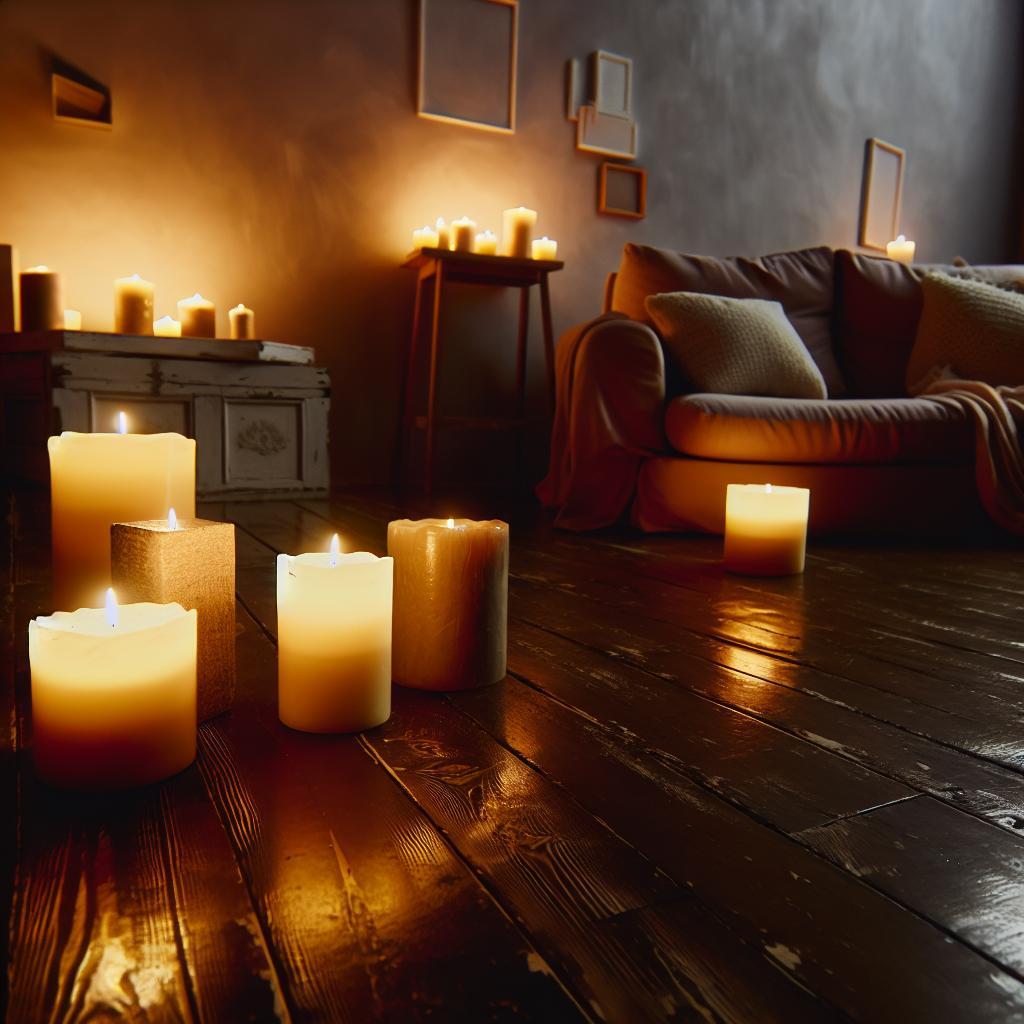DIY Soy Wax Candles: A Step-by-Step Tutorial
Illuminate your home with the warm glow of homemade soy wax candles with this easy-to-follow guide.

Choosing the Right Soy Wax and Wicks
Starting your soy wax candle making journey begins with selecting high-quality soy wax and the appropriate wicks. Soy wax is a natural, renewable resource that burns cleanly and slowly, making it an ideal choice for candle making. Look for soy wax flakes that are specifically designed for candle making, as they will provide the best results. When choosing wicks, consider the size of the candle you wish to make; the wick's thickness and length should be compatible with the candle's diameter to ensure an even burn.
It's also essential to decide whether you want to use pre-waxed wicks or prime them yourself. Pre-waxed wicks are convenient and easy to use, while priming your own wicks can be a more cost-effective option and allows for greater customization.
Melting and Coloring Your Soy Wax
Melting soy wax is a straightforward process that requires careful attention to temperature. Use a double boiler or a wax melter to gently heat the wax flakes until they reach a smooth, liquid consistency. To avoid overheating, keep the temperature between 170-180 degrees Fahrenheit. If you wish to add color to your candles, now is the time to do so. Stir in dye blocks or liquid candle dye, a little at a time, until you achieve the desired shade. Always remember to use dyes that are safe for candle making to prevent any issues with burning.
Keep in mind that the color of the wax will appear lighter once it solidifies, so you may need to add more dye than you initially think. For a natural alternative, consider using natural colorants like mica powders or spices.
Adding Fragrance to Your Soy Wax
Fragrance can transform the ambiance of a space, so selecting the right scent for your soy wax candles is crucial. When the wax is fully melted and has reached the appropriate temperature, usually around 185 degrees Fahrenheit, it's time to incorporate your chosen fragrance oils. Be sure to use oils that are formulated for candle making to ensure a safe and pleasant burn. Add the fragrance oil gradually, stirring gently to distribute it evenly throughout the wax.
The amount of fragrance oil you'll need can vary depending on the oil's strength and your personal preference, but a general guideline is to use about 1 ounce of fragrance per pound of soy wax. Always refer to the manufacturer's recommendations to achieve the best results.
Pouring and Setting Your Candles
Once your wax is colored and fragranced, it’s time to pour it into your prepared containers. Before pouring, let the wax cool to around 135-140 degrees Fahrenheit to reduce the likelihood of cracking or frosting. Secure your wicks in the center of the containers, then pour the wax slowly to avoid creating air bubbles. Fill the container to the desired level, leaving a small space at the top.
After pouring, allow your candles to set undisturbed in a warm area free from drafts. This can take anywhere from several hours to overnight, depending on the size of the candles. As the wax cools, it will contract slightly, so you may need to top off the candle with a small amount of leftover wax to ensure a smooth surface. Once fully set, trim the wick to about 1/4 inch, and your candles are ready to use.
Decorating and Personalizing Your Soy Wax Candles
The beauty of making your own soy wax candles is the ability to personalize them to your taste. You can decorate the outside of your candle containers with paint, ribbons, or even natural elements like twine and dried flowers for a rustic look. If you're gifting the candles, consider custom labels or tags that reflect the scent or occasion.
For a more interactive experience, you can layer different colored waxes, embed objects like crystals or herbs into the candles, or use special techniques to create textured effects on the surface of the wax. The possibilities are endless, and each candle you create will be a unique piece of functional art to enjoy or share with others.
